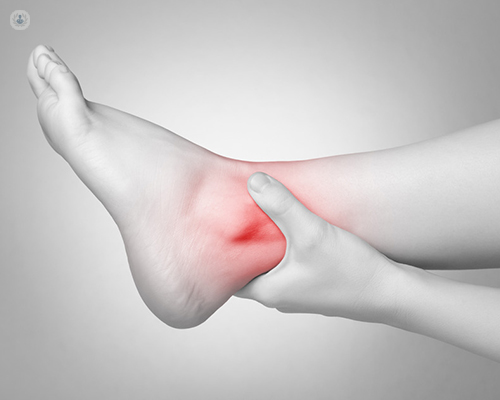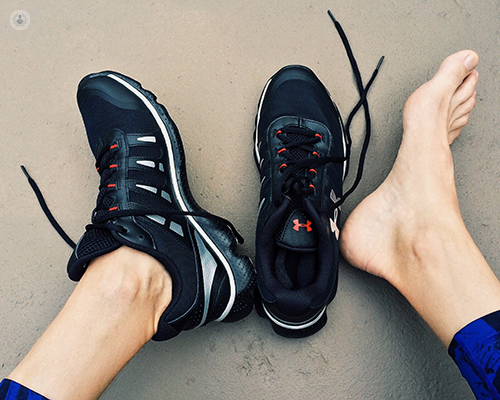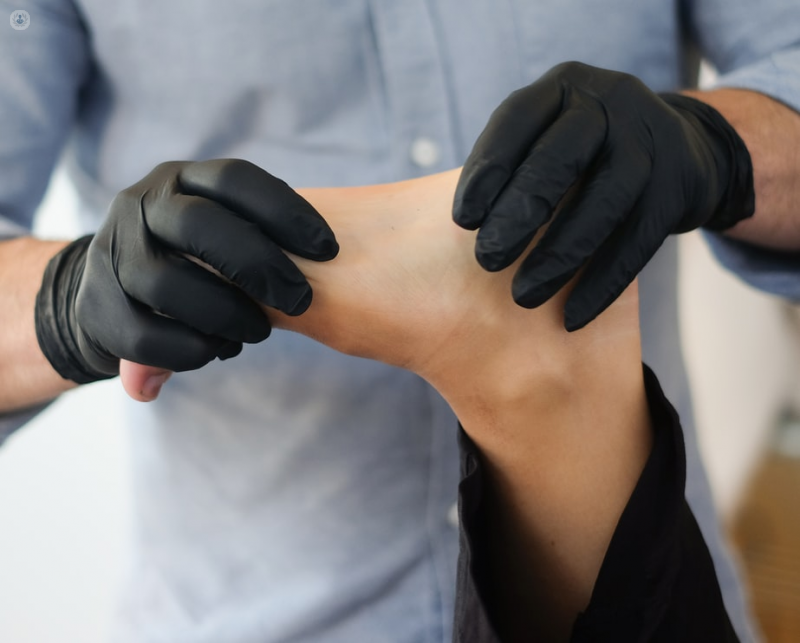Ankle sprains: what are they and how do they occur?
Autore:Ankle sprains, depending on the their severity, can cause extreme discomfort and can disrupt one's quality of life. We recently spoke to leading consultant trauma and orthopaedic surgeon, Mr Nima Heidari, and quizzed him with regards to the main causes of ankle sprains, the different types of ankle sprain, as well as the condition's standard initial and post-operative treatment processes.

What are ankle sprains and how do they occur?
The term ankle sprain refers to injury of the ligaments around the ankle. Ankle sprains are one of the most common types of athletic injuries, and they also frequently occur outside of athletic activities.
Baseball is usually quoted as one of the most common sports that results in ankle sprains, and netball and football are equally guilty in this respect. As well as sporting injuries, sometimes just rolling over the ankle, missing a few steps, or landing awkwardly on uneven terrain, can all go on to cause an ankle sprain.
What are the different types of ankle sprain?
There are three sets of ligaments surrounding the ankle. They are located on the inner side of the ankle, the outer side of the ankle, and in an area which is called the syndesmosis, which is where the two bones of the lower leg come together just before the ankle joint itself.
Ankle sprain is a rather coverall term for a variety of injuries that occur around the ankle. The most common type of ankle sprain is termed as a lateral ligament sprain, which is injury of the ligaments on the outer side of the ankle.
Frequently, ligaments on the inner side of the ankle can be injured. Occasionally, there is a type of ankle sprain called a high ankle sprain, where there is injury to what is described as the syndesmotic ligament, the ligament between the tibia and the fibula, the two bones of the lower leg that come together just above the ankle joint.
Each of these ligaments can be injured from being slightly stretched all the way to undergoing a full tear. In the very severe forms of ankle sprain, the ankle joint itself can actually be dislocated. This is usually as a result of very high-energy injuries, such as road traffic accidents, falls from great heights, or very severe clashes in contact sports. More commonly, it is the less severe form of ankle sprains that tend to occur.

Initial treatment
The usual initial treatment of any ankle sprain would be to rest it, and to place ice around the ankle joint. This should be done with a cold pack wrapped in a towel to stop it being in direct contact with the skin, as direct contact of ice with the skin can cause quite severe blistering.
Compression can be applied to the ankle, and elevation of the ankle (ideally above the level of the heart) should also be applied to try and reduce the swelling. There is a great deal of discussion whether the ankle should be splinted in a boot to immobilise it, or whether a stirrup ankle support can be utilised in what is termed a functional brace. Certainly, the use of immobilisation has an immediate great pain-relieving effect, but in the longer term, the use of the functional splint allows for a much better recovery.
Post-operative treatment
After this initial urgent treatment of the ankle, you will then need to be accessed by a specialist. This is usually done through examining the ankle, assessing where exactly the pain is, assessing the mobility of the ankle, and also seeing which ligaments have been injured through a thorough examination.
Following this examination, usually X-rays are required to assess the integrity of the bones, and to see whether any of the bones have broken. If the severity of the ankle sprain warrants it, an MRI scan is usually performed in order to assess the integrity of the ligaments and see if there is any injury to the cartilage in the ankle joint.
The MRI scan is particularly useful for assessing the high ankle sprain, and the presence of injury to the cartilaginous covering within the ankle joint. Following this, usually splinting the ankle for seven to ten days in a boot will allow the pain to settle down and the swelling to reduce. At this point, I like to transition patients to a functional ankle brace and make a referral to physiotherapy.
Physiotherapy the key to a full recovery
Physiotherapy is an incredibly important part of the treatment. Approximately 90 per cent of individuals who sustain an ankle sprain; even sometimes relatively sever ones; will make a full recovery simply due to physiotherapy.
In the other ten per cent, there tend to be other injuries accompanying the ankle sprain, which can cause a delay in the process of full rehabilitation and recovery, and on rare occasions, there may a need for surgical intervention.

How long will it take to fully recover from an ankle sprain?
Full recovery from ankle sprains can take a surprisingly long time, depending, to some extent, on the severity of the initial injury. Some individuals make an almost full recovery within four to ten weeks, whilst others can take several months to make a full recovery.
Is suffering from recurrent ankle sprains a cause for concern?
Recurrent ankle sprains and recurrent injuries of the ankle are associated with development of arthritis in the ankle joint. This can have a profound effect on one’s quality of life.
Summary: ankle sprains
In summary, ankle sprains are very common. They range from rather mild injuries to quite severe injuries. Appropriate assessment and correct treatment can mitigate long-term problems of the ankle.
If you are worried about the state of your ankle(s) and would like to book an appointment with Mr Heidari, you can do so by clicking on his Top Doctor's profile here.


